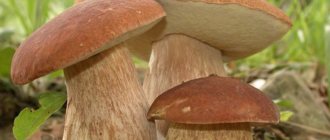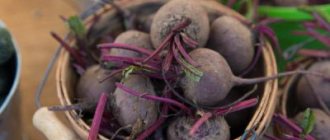Have you ever had cases when, when kneading, the baking dough just didn’t want to rise? It seems that the amount of yeast was correctly calculated, and the rest of the ingredients were added according to the recipe, but the required splendor was not there. And there is only one reason for this - improper storage of yeast. Let's figure out where and how to store yeast in order to use it for as long as possible without compromising the quality of baked goods.
Fresh pressed yeast
Most often, fresh or pressed yeast is used in cooking. On store shelves they are sold packaged in briquettes of 50 and 100 g. You can store compressed yeast in the refrigerator, freezer or at room temperature.
At room temperature
If you choose the latter option, keep in mind that it is acceptable for a maximum of 1–2 days. A little trick will help extend the shelf life of the product in room conditions up to 4 days. Sprinkle the briquette with salt or flour and put it in a dark and cool place. But it is better to use the traditional storage method and put live yeast in the refrigerator. At temperatures from 0 to +4 °C and free access to oxygen, they will be perfectly preserved for about 12 days.
Before using yeast that has been stored in the refrigerator, you need to check it for germination.
Freezing
But what if you haven’t used the entire briquette, and the next baking is not coming soon? In this case, you can freeze the leftovers or dry them. If you are worried that the fungi will die at low temperatures, this is not the case. They will only fall into suspended animation, but will retain all their properties. Before freezing, be sure to divide the briquette into portions. Wrap each with foil, parchment or cling film. It is advisable to sign the package and indicate the date it was placed in the freezer. Store frozen products for 1–2 years at a temperature of –18 … –24 °C.
Keep in mind that before using yeast that has been stored in the refrigerator, you need to test it for germination. Heat a glass of milk or water to +30 °C, add 1 tsp. sugar and 1 tbsp. flour. Cut off the top darkened layer from the briquette and dissolve it in the prepared mixture. Let stand for 10–15 minutes. The appearance of foam will indicate that the fungi are alive.
Drying
You can dry live yeast as follows. Crumble them thoroughly with your fingers and rub them into the flour. Roll into small balls or simply place on paper and leave at room temperature. Store in a glass container, covered with a cloth, for no more than 6 months. Never cover the container with a lid.
Yeast shelf life
How long and under what conditions is yeast stored?
- Alive. The manufacturer indicates the shelf life of the yeast on the packaging of the briquettes. According to GOST R 54731-2011, the highest grade product is good for one month, the first - 12 days in the refrigerator. On a cabinet shelf, the quality of the yeast mass is preserved for 1 day, in the freezer - 2 years.
- Dry baked goods. The powder product, packaged hermetically, is suitable for use from six months to one and a half years, if opened in the refrigerator - for a month.
- For fast-acting granules with a high moisture content (40%), the shelf life is reduced to one and a half months at a temperature of 4–8 °C. After the integrity of the bag is damaged, the product is used immediately.
- Yeast granules, which do not require pre-activation, contain a minimal amount of moisture, so they do not lose their beneficial properties for 2 years. They can be used after opening the package within two days.
- Wine. The product can remain active for 2 years if stored in a cool room without access to light.
- Beer houses. Unopened packaging is stored in the refrigerator for 2 years, in a glass jar with water - 1 month.
Dry yeast
To store dry yeast, you need to choose the right place. It should be dry, dark, with an air temperature of +10 to +15 °C. The shelf life will depend on how much moisture the product contains. Granulated yeast has the shortest shelf life. It is advisable to use them within 6 weeks. Dry active yeast retains its properties for about six months. In addition, they are not at all demanding on temperature conditions. However, once the package is opened, they must be used within 1 month.
Instant yeast has the longest shelf life. Even after 2 years, they demonstrate excellent germination and give baked goods the necessary fluffiness. Keep in mind that after opening, such yeast should be used immediately, since when interacting with oxygen, it loses activity after 2 days.
Large stocks of dry yeast can be stored in the freezer. Be sure to first divide them into portions and place them in sealed containers. If you store the entire stock, then every time you take it out of the freezer, condensation will form, which will lead to spoilage of the product.
Read also: Features of storing flour at home
How to properly store milk?
Secrets of washing terry towels
Is it possible to freeze
Freezing yeast is common; most often it is stored this way. This applies more to pressed fungus - it tolerates this procedure well, but dies when repeated. In order not to defrost the entire briquette, before placing it in the freezer, cut it into portions and, when needed, take out the required amount. Freeze the product wrapped in:
- wax paper;
- foil.
Polyethylene and plain paper are not suitable for storage - the first does not allow oxygen to pass through, the second fills with moisture when the fungus is thawed. Wet and blurred pieces of paper are difficult to remove from the product; they get into the bulk and spoil the quality.
On a note! Defrost gradually. A sharp increase in temperature reduces activity and kills the fungus, so it is allowed to thaw in the refrigerator.
The portion is taken out of the freezer and placed on a plate in the refrigerator, where it is left for 12 hours. This is enough for defrosting. Before using the thawed fungus, drain the water from it.
Other types
Some housewives prefer to use liquid yeast for baking. They are usually poured into glass jars covered with a cloth and placed in the refrigerator. Without feeding, the starter can last up to 1 month. Then add 1 tsp to it. sugar or honey and only then use it in cooking.
Lovers of homemade wine and champagne acquire wine yeast. To preserve their properties, choose a dark and dry room with an air temperature not exceeding +15 °C. In such conditions, the wine starter will last about 2 years.
The dry alcohol product is used to make mash from sugar. It is sold in vacuum packaging and has a shelf life of up to 5 years. Should be stored in a dry, dark, cool place.
We hope that now you will not have any questions about where and how to keep yeast at home. Be sure to keep an eye on their expiration dates. After all, yeast is living organisms, and their life cycle is limited.
Yeast varieties
Housewives use baker's yeast for home baking. At retail outlets, goods are purchased in the form of compressed briquettes, powder or dry granules of various sizes. The production of wine and strong alcohol is accelerated by alcoholic yeast fungi.
Dry
Due to the long shelf life and preservation of quality at different temperatures, dry yeast in the form of light brown granules is most in demand. The disadvantage of the product is the slow activation process. This is explained by the fact that when drying fragments of the mass, some of the living cells die.
Dry yeast is distinguished by shape, composition, and fermentation rate. In addition to active granules, manufacturers produce instant (instant) and fast-acting granules, consisting of small fractions.
Alcohol
Yeast, additionally fed with salts and resistant to toxic ethanol, is called alcohol yeast. Their use reduces production time and improves the quality of the mash. The output is alcohol with a lower content of fusel oils and acetone. The product with a moisture content of 7% is produced dry in vacuum bags.
Fresh bakery
The texture of the bread, close to ideal, is created by fresh raw yeast used in bakeries. Compressed rectangular briquettes, consisting of living yeast cells, contain up to a quarter of the weight of dry matter and 75% moisture. The creamy, whitish, yellowish, gray color of the product depends on the type of feed molasses (molasses), age, and yeast strain. Fresh yeast provides more vigorous fermentation than dry yeast.
How to tell if yeast has gone bad
If it is pressed yeast, then you can tell that it has gone bad by its appearance. Fresh ones will have a light beige color, while expired ones will be covered with brown spots.
There is also a test method that requires milk, flour, sugar and a small piece of yeast. Mix everything and pour in 1/3 cup of warm water. If they are expired, then lumps will float to the surface of the bowl, fresh ones will quickly dissolve, and after a while their fermentation will begin.
Yeast is a unique product with which you can bake beautiful, fluffy pies and buns. In addition, some varieties of this product are used for the production of alcoholic beverages, medicines and even in cosmetology. To get high-quality results from using yeast, you must follow the rules for storing it.
Freezer storage
At low temperatures, fungal cells enter a state of suspended animation, but are able to resume vital activity after thawing. Before freezing, the cube or block is divided into parts that can be used to prepare one portion of dough. Portioned pieces are individually wrapped in foil and placed in the freezer. Another way is to store in a plastic container with a tight lid.
The yeast is left to thaw on the refrigerator shelf the night before making the dough. A quick alternative is to microwave on low power. When thawed, the mass becomes liquid, so it is defrosted in a cup or deep saucer. After thawing, re-freezing is not allowed.
See also
How to preserve lemons for the winter at home, the best methods and timing
How to choose good ones
A large number of manufacturers offer dry wine yeast, how to make the right choice? Bacterial strains differ from each other in where they are collected and in their unique properties. For us, the place where the assembly was carried out is not of particular importance, but the properties, on the contrary, are important.
Winemakers divide yeast according to the following specific characteristics:
- By application - for white, red wines, champagne, cider, etc.
- Fermentation speed – the duration of fermentation determines the total preparation time of the wine. The speed of fermentation is not always important; some wine recipes require a long fermentation period. You need to look at the individual recipe;
- Heat-resistant - an individual feature of a strain that is able to survive and reproduce at lower or higher ambient temperatures. Choosing such brands is useful when it is not possible to control the room temperature.
- Alcohol-resistant - most wine yeasts die when the wort contains more than 12% alcohol. Individual colonies of bacteria have been bred that are able to work in solutions containing more than 16% alcohol. They are used in the preparation of fortified wines.
- Acid-resistant – used in wort with high acidity.
This is not a list of all possible characteristics of yeast. In fact, in order to make the right choice of yeast strain, it is necessary to determine the characteristics of the drink that will be produced.
For wines made from grapes, you can choose a colony adapted to the selected grape variety. For apple liqueurs, it is better to take ones with increased acid resistance. For drinks made from berries or fruits, universal colonies of bacteria are suitable.
Beer houses
In order for brewer's yeast to retain its quality for as long as possible, it must be filled with cooled boiled water, maintaining a 1:1 ratio. This type should be stored exclusively on the refrigerator shelf.
You need to drain the water once every 2 days. This will enable the yeast to obtain the necessary amount of oxygen for normal existence. After 2 days, the mushrooms are again filled with water.
The shelf life of brewer's yeast in the refrigerator is 1 month. After this time, the beer mushroom begins to lose its original quality. And in warm conditions it will lose effectiveness within a few hours.
The container in which brewer's yeast is stored must have a volume at least 2 times larger than its contents, since this product is capable of expanding.
- At + 4°C -+7°C, beer starter will retain its properties for up to 4 months.
- In dry form, these products will remain usable for up to 2 years.
- Frozen storage of brewer's yeast is not recommended: this culture does not retain vital activity at subzero temperatures.
Signs of product spoilage
Yeast cells require a liquid environment, but are unable to retain water or prevent it from evaporating. If there is little moisture, then the yeast loses up to 10% of its mass. The pressed cube dries out, cracks and darkens when stored for a longer period of time than recommended by the manufacturer. Over time, a light cube or block becomes covered with a white coating, then with gray mold. The smell becomes unpleasant and the taste becomes bitter. Moldy yeast is thrown away.
Important! Yeast that has expired loses its potency.
It is not necessary to throw in the trash a product that has dried only on the surface. Dry pieces of yeast are cut off, and the remaining mass is used as usual. If you are not sure about the activity of the cells, then prepare a small amount of test for testing.
Classification of wines and types of dried wine yeast used
Popular producers offer an extensive list of CKD strains for each type of wine. That’s right, each cultivated strain was developed for specific grape varieties in order to most fully express the individual organoleptic characteristics of a particular wine variety. For example, for white wine, certain varietal CACs may be recommended to allow the characteristic fruitiness to emerge, while for red wine, greater stabilization of phenolics is recommended to enhance flavor and improve color. When producing sparkling wine, some winemakers choose the Epernay strain (named after a city in the Champagne wine region).











